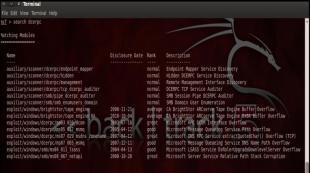Review of circuits for controlling a chandelier via two wires. Remote control via two wires Control via two wires diagram
It is unnecessary to say what a big role vision plays for us, and at the same time the light with which we see. That is why lighting devices play such a significant role in interior design for us. In some places they are very simple, like wall lamps or ceiling lamps, and in others they are more elegant. And the more complex the lighting device, the more complex the connection diagram it will require, which in itself is a completely understandable conclusion. For example, a chandelier, it usually implies the ability to connect two circuits with lamps, thereby changing the illumination in the room from dim, so to speak intimate, to bright light.
Controlling a chandelier via three wires
We are all already accustomed to the fact that a chandelier with two modes is controlled via three wires. In fact, in this case, two parallel circuits are implemented for each group of chandelier lamps. Each of the circuits begins with a switch, thereby switching the desired circuit and turning on the desired lamps. This option can be called generally accepted. It is simple and can be implemented with minimal investment - one additional wire from the switch to the chandelier. This option is described in detail in one of our articles “Connecting a chandelier”.
However, this option also has disadvantages; this is precisely the third wire, which we mentioned as an advantage of minimizing investments in the connection circuit. After all, imagine this option, when the walls are plastered and wallpaper is pasted. Here it is unlikely that it will be possible to route the third wire quickly and without problems. There are two options here. This is to buy a chandelier that will have several lighting modes and be controlled from a remote control. The second option is to implement a circuit that would provide step-by-step switching for each group of lamps, depending on the number of switchings of the control switch. It is these options that we will talk about further...
Controlling a chandelier via two wires (schemes)
In our case, several options for controlling the chandelier via two wires will be given. Each option will have its own pros and cons, which we will discuss in the process of describing each of the possible connection cases. And now, in order...
1 Option to control the chandelier via two wires
The first option is the simplest, but also the most flawed. It will not require high qualifications from the person who will implement it, nor the use of many radio components. But its disadvantage is that the level of performance characteristics will also not be high. The thing is that the circuit uses a feature of our power supply network, which, as we know, produces alternating current with a frequency of 50 Hz. Also a property of diodes that pass this same current in only one direction. Take a look at the diagram.

When a half-wave passes in one of the directions, the current flows through the diode to the lamp and through the diode behind the switch, but located in the same direction. That is, current can only pass through diodes working in pairs, so to speak. A similar situation occurs when a half-wave passes in the opposite direction. Now the current flows through the diode in front of the switch and through the diode behind the lamp, with the diodes also installed in the same direction. So, as you already understand, the circuit is very simple, it is very easy to install. The downside is that the lamps will shine at the incandescent level, since it will be one half-wave, that is, a voltage of 110 volts. There will also be a flickering effect, because in this case the power frequency will also become half - 25 Hz. It is these low performance characteristics that we mentioned earlier.
Option 2 chandelier control via two wires
This option can be called somewhat innovative. But why!? You will understand this from the description of the operating principle of this circuit. Take a look at her first...

When the circuit is closed, all lamps HL4-6 switched on directly and HL1-3 lamps switched on through relay contacts are turned on. But here the relay itself is immediately activated, thereby turning off the HL1-3 lamps. Next, a thermistor comes into operation, which, when current flows through it, begins to change its resistance, it decreases. As a result, the resistance changes to the point that the next time the switch is triggered, the current passes primarily through it, and not through the relay winding. In this case, the relay does not operate and all 6 lamps light up. Here it is important to use resistor R1 to find such a voltage that when the thermistor is cold, the voltage is enough to trigger the relay, and when it is heated, it is enough to hold, but not enough to trigger...
Used radio components: Relay K1 - small-sized with a winding resistance of about 300 Ohms, an operating voltage of 7 V and a release voltage of 3 V. resistor R2 - three ST3-17 thermistors connected in parallel with a resistance of about 330. Resistor R1 type MLT-0.25 with a resistance of several tens of Ohms . We'll have to pick it up. Diode bridge type KTs407A. Capacitor C1 - 50uF x 16V.
If we talk about the disadvantages of this circuit, then this is, firstly, the need to adjust it to the parameters of the relay and thermistor. The second thing is that you will not be able to switch the light back to a smaller one until the thermistor cools down. The third scheme is devoid of these disadvantages, and is no more complicated...
3 Option to control the chandelier via two wires
The third option is borrowed from Radio magazine, dating back to 1984. But this scheme is still relevant! Let's take a look at it...

Everything here is very simple and logical. Initially, we turn on lamp H1 and at the same time relay K1 is activated, which, through its contacts and diode, begins to charge the capacitor. During a short-term shutdown, the contacts of relay K1 open, thereby the capacitor begins to power the winding of relay K2. While the relay has worked, it is a few fractions of a second or seconds. It all depends on the consumption of the relay and the capacitance of the capacitor. You must turn the switch back on. In this case, the relay will pick up itself and eventually all the lamps will light up. The disadvantage of the circuit is that it is necessary to turn on the switch in time, when relay K2 is still powering the capacitor. Only in this case will it be possible to ensure that all lamps are turned on.
4 Option to control the chandelier via two wires
This option, in addition to the fact that it does not provide any settings, also does not have any restrictions on the time algorithm for turning on the lamps. Like circuit 2, where there is a dependence on the temperature of the resistor, and circuit 3, where you need to have time to turn on the switch a second time before relay K2 has turned off. Let's look at the diagram...

Here, to operate the relay, the same principle is used that we considered for circuit 1. Only in this case, the relay is activated, and not the lamps. As a result, the relay is able to switch the “full” current and voltage to light the lamps. In addition, if the relays have dual switched contacts, then a third channel can be implemented to connect a third group of lamps. Through contacts K1.2 and K2.2. The scheme has virtually no disadvantages. Unless you need a couple of 110 volt relays. Capacitors are installed to reduce the influence of induction current on the relay windings and to stabilize the current from changes in the alternating voltage of the network.
Summarizing the implementation of the ability to control a chandelier via two wires
So, summarizing all of the above, we can focus on two options. This is option 1, when the connection is as simple as possible. It’s worth trying with LED lamps, which have built-in capacitors, which will somewhat soften the blinking.
The second option, if you feel confident that you can implement a simple radio-electric circuit, is to use 4 cases. The option is free of any disadvantages and does not require adjustment or specific algorithms for turning on chandelier lamps.
Described below device intended for remote control ten loads via two-wire line communications up to 10 m long. It can be used to control household radio equipment, toys, and to transmit information about the status of sensors of various devices.
This device differs from similar ones in purpose (for example, [L]) by the possibility of simultaneous transmission of several commands in any combination and the convenience of monitoring the transmitted information (by the position of the knobs or switch buttons on the transmitter remote control). In addition, the transmitter does not require its own power source - it powered via the same communication line.The system remains operational when the supply voltage changes from 9 to 5 V, and when using K561 series microcircuits - from 12 to 5 V.
The principle of operation of the device is as follows. The required commands are transmitted by setting the control panel switches to the appropriate position. The transmitter cyclically polls the status of the remote control contactor at a clock frequency. A sequence of command pulses (closed contacts correspond to a short pulse, open contacts correspond to a long pulse) is transmitted via a communication line to the receiver. The receiving device processes the received information and generates a signal to turn on the corresponding loads.
The schematic diagram of the transmitting device is shown in Fig. 1, receiver - in Fig. 2. Fig. 3 illustrates the operation of the entire system.
After turning on the receiver with toggle switch SA1, the supply voltage via the communication line through the diode VD15 (Fig. 1) is supplied to the transmitter. After charging the capacitor SZ to the supply voltage, a short pulse generator with a duty cycle of 5 and a repetition frequency of about 200 Hz, assembled on elements DD1.1, DD1.2, begins to operate. From these pulses (diagram 1, fig. 3), trigger D02.1 generates clock signals (diagram 2) sent to counter DD3. The pulses that appear sequentially at the outputs of the counter, depending on the state (diagram 3) of the command switches SA1 - SA10, pass or do not pass to the upper input of element DD1.3 (diagram 4). If the contacts of a switch are open, then at the appropriate moment pulses from the generator output are received at the same input through the diode VD2.

A long pulse (diagram 5) comes to the second input of element DD1.3 from trigger DD2.2 after each contactor polling cycle. A pulse is sent to the same input from trigger DD2.1, prohibiting the passage of information through element DD1.3 in each first half of the time of polling the state of the corresponding switch. The pulse trains formed by the coincidence element DD1.3, after inverting by the element DD1.4 (diagram 6), are sent to the electronic switch on the transistor VT1 and then into the line (diagram 7).
To ensure selection of pulse bursts in the receiver, the transmitter forms a pause after each polling cycle, during which the receiver counter is reset to zero.
The receiver assembly (Fig. 2), assembled on elements DD1.1, DD1.2, is a standby multivibrator. It is triggered by declines in information pulses that come from the transmitter to pin 2 of element DD1.1. Circuit R1C1 determines the duration of the output pulses, at the end of which elements DD1.3, DD1.4 and transistor VT3 form write pulses (diagram 8). Information pulses (diagram 7), inverted by transistor VT1 (a sequence similar to diagram 6 is obtained), are supplied to input D of flip-flops DD3 - OD7 (pins 5 and 9) and to input C of counter DD2, which, by switching, allows the passage of the write pulse to input C of the corresponding trigger.
 A short information pulse ends before a recording pulse is formed, and a 1 signal appears at the inverse output of this trigger; if the pulse is long, then a 0 signal. A load with a current consumption of no more than 50...100 mA can be connected to the collector of each transistor VT4 - VT13 .
A short information pulse ends before a recording pulse is formed, and a 1 signal appears at the inverse output of this trigger; if the pulse is long, then a 0 signal. A load with a current consumption of no more than 50...100 mA can be connected to the collector of each transistor VT4 - VT13 .
To set the DD2 counter to its initial state, use a single-pulse generator made on a unijunction transistor VT2. Circuit C3R5 sets the time for generating the installation pulse, which should be less than the pause between bursts (diagram 10). After each information transmission, the capacitor SZ is discharged through the diode VD) and transistor VT1 of the transmitter (diagram 9).
The K176 series microcircuits used in the device can be replaced with the corresponding ones from the K561, K564 series. Instead of KT361 G transistors, you can use KT361, KT347, KT3107 with any letter index. Capacitor SZ transmitter and C2, SZ receiver - K53-1A, the rest - KM, resistors - MLT.
A device assembled from serviceable parts begins to work immediately and does not require adjustment.
A. KUSKOV, Perm LITERATURE
Inozemtsev V. Encoder and decoder of telecontrol commands. - Radio, 1985, No. 7, p. 40, 41.
If there are several lighting lamps in a network lamp, such as a chandelier, it is advisable to turn them on and off individually or in groups. If the power supply of such a lamp is three-wire, organizing independent control of two groups of lamps will not be difficult; it is enough to use a double switch. With two-wire power supply this is impossible. At the same time, the method of controlling two groups of lamps in a lamp via two wires has been known for decades. It is suitable for cases where it is not possible to replace two-wire wiring with three-wire wiring. It uses rectifier diodes, and the circuit is shown in Fig. 1. Such a simple circuit allows, depending on the position of the switches, to turn on one, two or three lamps (groups of lamps). However, previously this method was not widely used due to the fact that the main light source was incandescent lamps. When powered by half-wave rectified voltage, their brightness decreases significantly and noticeable pulsations of the light flux appear.
But if compact fluorescent lamps (CFLs), which are now becoming increasingly widespread, are used in the lamp, these shortcomings will be eliminated. This is due to the fact that the CFL uses the so-called electronic ballast (a more correct name is electronic ballast - electronic ballast) - a specialized switching power supply, which is powered from a 220 V network through a built-in rectifier with a smoothing capacitor. This allows low-power CFLs to be powered with half-wave voltage, and in most cases the brightness decreases slightly. Therefore, to control a chandelier with CFLs, you can use the circuit shown in Fig. 1. True, it’s rare, but there are low-power CFLs in which manufacturers, in order to save money, use not a full-wave bridge rectifier in the EPRA, but a half-wave rectifier on one diode. This should be taken into account when using CFLs in a luminaire. In addition, in the rectifier of electronic ballasts (especially low-power CFLs), as a rule, smoothing capacitors of small capacity (2.2...3 μF) are used, which can lead to a noticeable increase in pulsations of the light flux with a frequency of 50 Hz. To eliminate this drawback, CFLs should be powered from additional half-wave rectifiers.

The control circuit for two groups of lighting CFLs via two wires is shown in Fig. 2 (the part of the circuit to the left of connectors XT1, XT2 is the same as in Fig. 1). Here, each of the switches SA1, SA2 supplies supply voltage to its “own” group of lamps. Resistors R1, R3 limit the surge of charging current of capacitors C1, C2 when turned on, R2, R4 ensure their discharge after the lamp is turned off. An additional convenience of this solution is the possibility of using CFLs with different light temperatures, which are more convenient to use in a particular case or together.
Most of the elements for assembling the device can be removed from failed CFLs, be sure to check each part before installation for serviceability. Oxide capacitors must have a rated voltage of at least 400 V, and their capacitance must be at least 8.10 µF, and the more lamps in the group, the larger the capacitance should be (you can use several capacitors by connecting them in parallel). Connectors XT1-XT5 - any screw terminal blocks designed for operation in a 220 V network.
Diodes VD1, VD2 are mounted in the switch, the remaining parts are mounted in the lamp. There is no need to make a printed circuit board; all elements can be placed on a plate made of sheet plastic 1.1.5 mm thick, having previously determined its dimensions based on the free space available in the chandelier. The capacitors are attached to it with hot glue, the terminal blocks with screws, and the remaining elements are mounted on their terminals. The appearance of one of the board options is shown in Fig. 3.

After installing the mounted board inside the lamp and checking its functionality, it is covered with a plastic cover.
In a chandelier with the described control circuit, you can also use LED lamps, but only those that have a built-in switching power supply, and not a rectifier with a ballast capacitor.
It should be remembered that in accordance with GOST R 51317.3.2-2006, methods of half-wave rectification of the current consumed from the network can be used “if the controlled active power of the technical device does not exceed 100 W.”
Publication date: 12.08.2013
Readers' opinions
- Vasily / 10/26/2013 - 12:36
Hello! Less than a month had passed, the 12 Ohm MLT-2 resistor burned out - it could not withstand the inrush currents of the 147 μF capacitance, so I installed three parallel-connected MLT-2s of 56 Ohms each. - Vasily / 10/11/2013 - 05:20
Hello! To completely eliminate flicker, even noticeable only with peripheral vision, it was necessary to set the capacitance at the rate of 2 µF/W (so for 3 lamps of 23 W each, 147 µF was required). When installing a capacitance of 100 uF, the Chinese resistor 0.5 W (not to mention the 0.25 W shown in the diagram) burned out immediately when turned on (with a capacitance of 22 uF it worked fine), so I installed 2 W MLT, 36 Ohm for lamp 23 W, and 12 Ohm for 3x23 W. The diodes were installed by FR207. Thanks for the idea! Good luck to all!
Many remote control devices use a simplified keyboard, which allows you to transmit information about the state of the buttons to the microcontroller over just two wires. The principle is that when you press each button between these two conductors, a resistor of a certain resistance is turned on, the voltage between these two conductors changes accordingly, and has a certain value for each button, and then, using internal comparators, the microcontroller understands the command.
This principle can also be used in multi-command remote control systems via two wires (for example, in security devices, or to control devices and models).
The control panel contains four buttons S1-S4 and resistors R1-R3 of different values. These buttons and resistors are included between the two wires. Now, depending on the pressed button, the resistance between the wires (points “A” and “B”, when you press S1 is zero, on S2 - 1.5K, on S3 - 4.7K" on S4 - 15K. The role of the command decoder is performed by four comparators A1 chips.
In the initial position, when all buttons are open. the voltages at the outputs of all four comparators are negative. When the voltage between points “A” and “B” decreases, which occurs when one of the buttons is pressed, the levels are lower. created by the voltage divider on resistors R6-R10, the comparators are sequentially triggered and their outputs go into a positive state.
Thus, when you press the S4 button (the highest voltage between “A” and “B”), a positive level is set at the output of the comparator A1.1, if the S3 button is pressed, then the voltage is lower and now, in addition to A1.1, A1 is also triggered. 2 (now there are positive voltages at the outputs of both comparators), then when you press S2, the voltage decreases further and a positive level at output A1.3 is added to the first two; when you press S1, the voltage between points “A” and “B” is zero and positive levels are set at the outputs of all comparators.
Diode VD1 and capacitor C1 serve to prevent false alarms from interference on the wire line. It is easy to increase the number of commands; it is enough to continue the chain of comparators and select the values of new resistors in the keyboard.
Instead of an imported microcircuit with four comparators, you can use our four, for example K521CA3 or others.
Supplement the circuit, preferably with a logical decoder that converts the sequential switching code into decimal switching. In this case, it is necessary to use a single-polar power supply (from 12 to 24V) or make a logic level driver at the output of each comparator, consisting of a diode and a resistor, so as to cut off the negative level.
Described below device intended for remote control ten loads via two-wire line communications up to 10 m long. It can be used to control household radio equipment, toys, and to transmit information about the status of sensors of various devices.
This device differs from similar ones in purpose (for example, [L]) by the possibility of simultaneous transmission of several commands in any combination and the convenience of monitoring the transmitted information (by the position of the knobs or switch buttons on the transmitter remote control). In addition, the transmitter does not require its own power source - it powered via the same communication line.The system remains operational when the supply voltage changes from 9 to 5 V, and when using K561 series microcircuits - from 12 to 5 V.
The principle of operation of the device is as follows. The required commands are transmitted by setting the control panel switches to the appropriate position. The transmitter cyclically polls the status of the remote control contactor at a clock frequency. A sequence of command pulses (closed contacts correspond to a short pulse, open contacts correspond to a long pulse) is transmitted via a communication line to the receiver. The receiving device processes the received information and generates a signal to turn on the corresponding loads.
But if compact fluorescent lamps (CFLs), which are now becoming increasingly widespread, are used in the lamp, these shortcomings will be eliminated. This is due to the fact that the CFL uses the so-called electronic ballast (more correctly called electronic ballast - electronic ballast) - a specialized power supply that is powered from a 220 V network through a built-in rectifier with a smoothing capacitor. This allows low-power CFLs to be powered with half-wave voltage, and in most cases the brightness decreases slightly. Therefore, to control a chandelier with CFLs, you can use the circuit shown in Fig. 1. True, it’s rare, but there are low-power CFLs in which manufacturers, in order to save money, use not a full-wave bridge rectifier in the EPRA, but a half-wave rectifier on one diode. This should be taken into account when using CFLs in a luminaire. In addition, in the rectifier of electronic ballasts (especially low-power CFLs), as a rule, smoothing capacitors of small capacity (2.2...3 μF) are used, which can lead to a noticeable increase in pulsations of the light flux with a frequency of 50 Hz. To eliminate this drawback, CFLs should be powered from additional half-wave rectifiers.

The control circuit for two groups of lighting CFLs via two wires is shown in Fig. 2 (the part of the circuit to the left of connectors XT1, XT2 is the same as in Fig. 1). Here, each of the switches SA1, SA2 supplies supply voltage to its “own” group of lamps. Resistors R1, R3 limit the surge of charging current of capacitors C1, C2 when turned on, R2, R4 ensure their discharge after the lamp is turned off. An additional convenience of this solution is the possibility of using CFLs with different light temperatures, which are more convenient to use in a particular case or together.
Most of the elements for assembling the device can be removed from failed CFLs, be sure to check each part before installation for serviceability. Oxide capacitors must have a rated voltage of at least 400 V, and their capacitance must be at least 8.10 µF, and the more lamps in the group, the larger the capacitance should be (you can use several capacitors by connecting them in parallel). Connectors XT1-XT5 - any screw terminal blocks designed for operation in a 220 V network.
Diodes VD1, VD2 are mounted in the switch, the remaining parts are mounted in the lamp. There is no need to make a printed circuit board; all elements can be placed on a plate made of sheet plastic 1.1.5 mm thick, having previously determined its dimensions based on the free space available in the chandelier. The capacitors are attached to it with hot glue, the terminal blocks with screws, and the remaining elements are mounted on their terminals. The appearance of one of the board options is shown in Fig. 3.

After installing the mounted board inside the lamp and checking its functionality, it is covered with a plastic cover.
In a chandelier with the described control circuit, you can also use LED lamps, but only those that have a built-in switching power supply, and not a rectifier with a ballast capacitor.
It should be remembered that in accordance with GOST R 51317.3.2-2006, methods of half-wave rectification of the current consumed from the network can be used “if the controlled active power of the technical device does not exceed 100 W.”
Date of publication: 08/12/2013
Readers' opinions
- Vasily / 10/26/2013 - 12:36
Hello! Less than a month had passed, the 12 Ohm MLT-2 resistor burned out - it could not withstand the inrush currents of the 147 μF capacitance, so I installed three parallel-connected MLT-2s of 56 Ohms each. - Vasily / 10/11/2013 - 05:20
Hello! To completely eliminate flicker, even noticeable only with peripheral vision, it was necessary to set the capacitance at the rate of 2 µF/W (so for 3 lamps of 23 W each, 147 µF was required). When installing a capacitance of 100 uF, the Chinese resistor 0.5 W (not to mention the 0.25 W shown in the diagram) burned out immediately when turned on (with a capacitance of 22 uF it worked fine), so I installed 2 W MLT, 36 Ohm for lamp 23 W, and 12 Ohm for 3x23 W. The diodes were installed by FR207. Thanks for the idea! Good luck to all!









